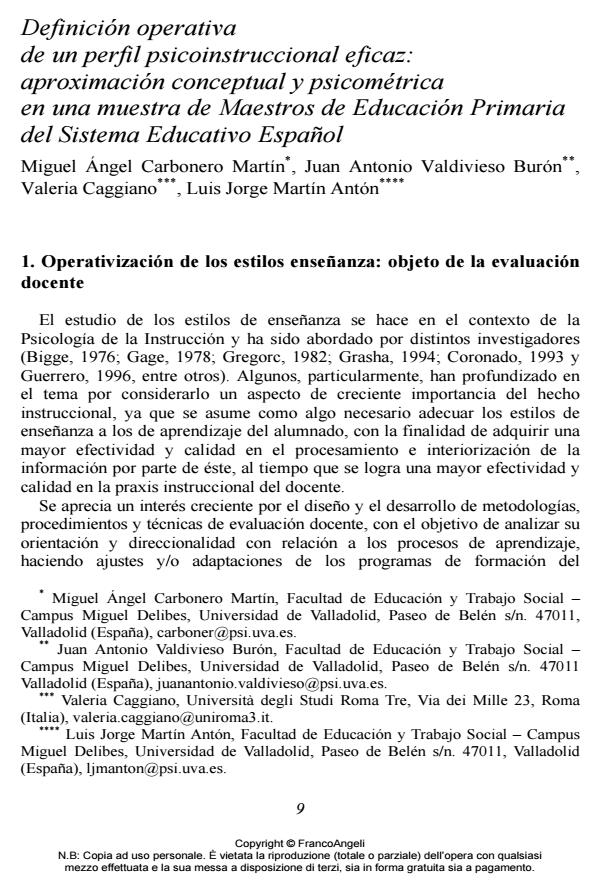Definición operativa de un perfil psicoinstruccional eficaz: aproximación conceptual y psicométrica en una muestra de Maestros de Educación Primaria del Sistema Educativo Espanol
Titolo Rivista CADMO
Autori/Curatori Angel Miguel Carbonero Martìn, Burón Juan Antonio Valdivieso, Valeria Caggiano, Antón Luis Jorge Martín
Anno di pubblicazione 2013 Fascicolo 2013/1
Lingua Spagnolo Numero pagine 14 P. 9-22 Dimensione file 449 KB
DOI 10.3280/CAD2013-001002
Il DOI è il codice a barre della proprietà intellettuale: per saperne di più
clicca qui
Qui sotto puoi vedere in anteprima la prima pagina di questo articolo.
Se questo articolo ti interessa, lo puoi acquistare (e scaricare in formato pdf) seguendo le facili indicazioni per acquistare il download credit. Acquista Download Credits per scaricare questo Articolo in formato PDF

FrancoAngeli è membro della Publishers International Linking Association, Inc (PILA)associazione indipendente e non profit per facilitare (attraverso i servizi tecnologici implementati da CrossRef.org) l’accesso degli studiosi ai contenuti digitali nelle pubblicazioni professionali e scientifiche
From the construction and validation of a rating scale of self-perceived Competence of the Primary School Teachers (ECAD-EP) is obtained the teacher profile assumed and developed by teachers of primary education belonging to the Spanish educational system that tries to answer operationalization of teaching styles that allow the teacher to discover those features that best demonstrate a high effectiveness. The structure of the scale validity presents a threedimensional factor in the following order: (a) Socio-emotional, composed of the variables: "Coexistence", "Mediation", "Revitalization group", "Emotional involvement", "Adapting communicative", "Communicative sensitivity", "Empathy" and "Self-efficacy"; (b) Communicative- relational, consisting of the variables: "Assertiveness", "Affective leadership", "Executive leadership", "Conflict resolution", "Nonverbal communication" and "Paraverbal communication"; © Instructional, which contains the variables: "Adapting to new situations", "Instructional control" and "Planning". Thus, the theoretical model of teaching as defined initially, has been appreciating elements and factors that form a multidimensional concept of meaning, including not only factual or behavioral variables, but also cognitive and metacognitive, social and emotional. Therefore, teaching is not only seen as a process of sequential linear or uniform but circular in nature with a constant interplay between a number of variables or dimensions and multiple hierarchies.
Parole chiave:Teaching styles, evaluation of teaching, self-perceived teaching competence, instructional variables, teacher rating scale.
Angel Miguel Carbonero Martìn, Burón Juan Antonio Valdivieso, Valeria Caggiano, Antón Luis Jorge Martín, Definición operativa de un perfil psicoinstruccional eficaz: aproximación conceptual y psicométrica en una muestra de Maestros de Educación Primaria del Sistema Educativo Espanol in "CADMO" 1/2013, pp 9-22, DOI: 10.3280/CAD2013-001002